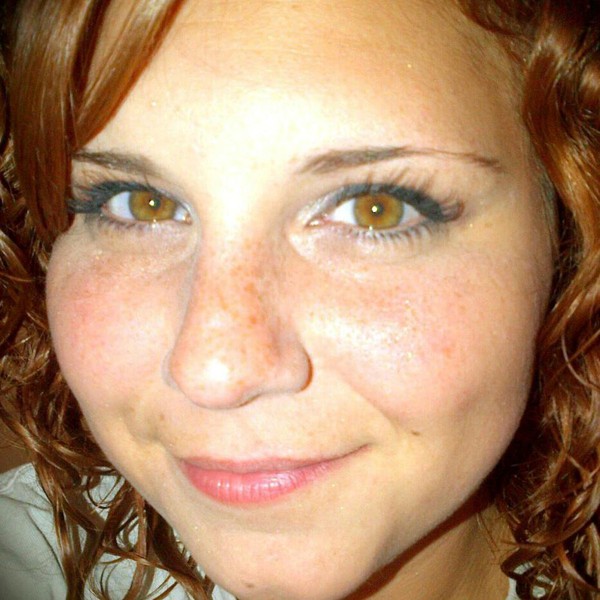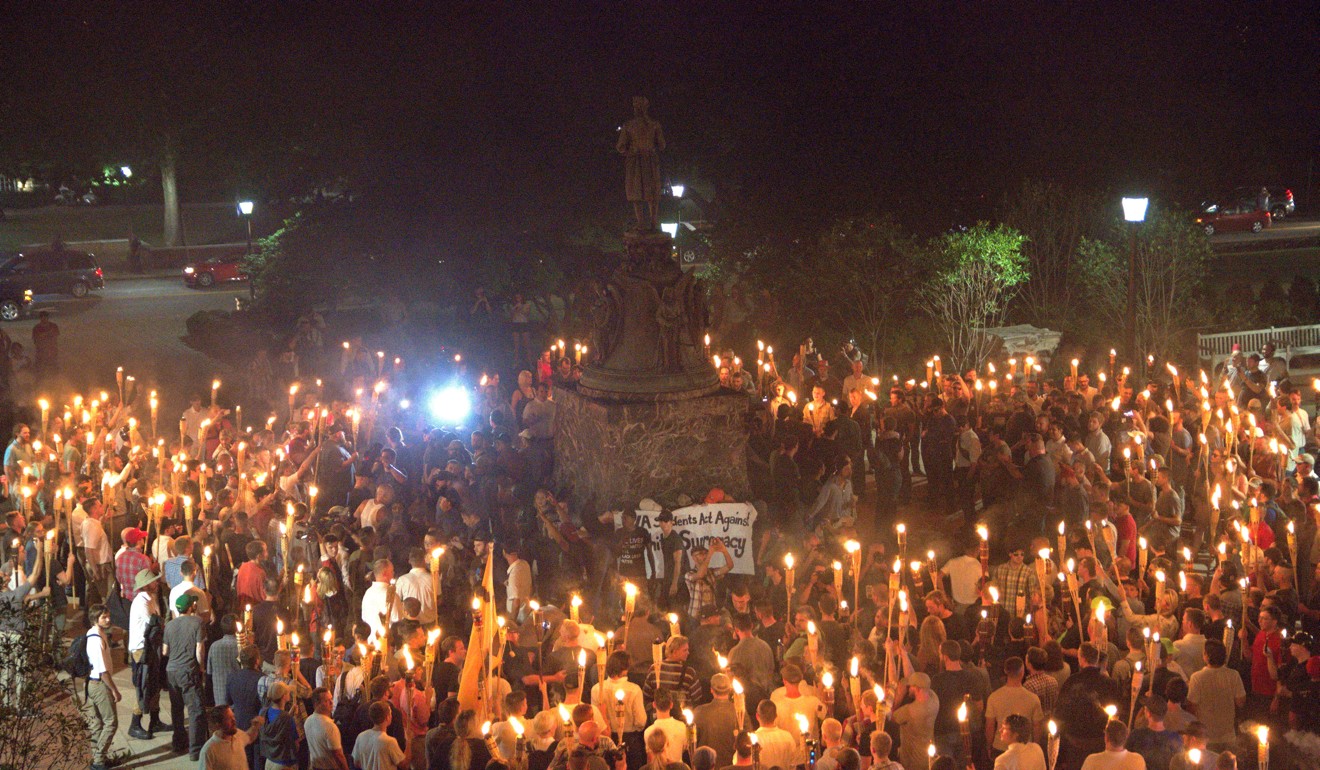
Playing with fire: why won’t Trump just condemn white supremacists, instead of blaming ‘many sides’?
Why doesn’t US President Donald Trump just unequivocally condemn white supremacists?
It’s a jarring question to ask about an American president. But it’s also one made unavoidable by Trump’s delayed, blame-both-sides response to the violence that erupted Saturday when neo-Nazis, skinheads and members of the Ku Klux Klan protested in Charlottesville, Virginia.
Heather Heyer, 32 was killed when a car allegedly driven by a white supremacist sympathiser, James Alex Fields, ploughed into counter-protesters in an attack decried as “terrorism” by Trump’s security adviser H.R. McMaster. Fields has been charged with second-degree murder.

At times, his approach has seemingly inflamed racial tensions in a deeply divided country while emboldening groups long in the shadows.
On Saturday, as Trump read slowly through a statement about the clashes, he addressed the violence in broad strokes, saying that he condemns “in the strongest possible terms this egregious display of hatred, bigotry and violence on many sides, on many sides.”
Speaking slowly from his New Jersey golf club while on a 17-day working holiday, Trump added: “It’s been going on for a long time in our country. Not Donald Trump. Not Barack Obama. It’s been going on for a long, long time.”
The president was silent when journalists asked whether he rejected the support of nationalist groups.
That silence was cheered by the white supremacist website Daily Stormer: “When asked to condemn, he just walked out of the room. Really, really good. God bless him.”
The president needs to step up today and say what it is. It’s evil. It’s white nationalism
Trump denies that he’s racist or sympathetic to such groups. Son-in-law Jared Kushner, the grandson of Holocaust survivors, and daughter Ivanka, who converted to Judaism, are among those who have defended the president against those charges.
Still, he has a history of engaging in high-profile, racially fraught battles.
Early in his career as a developer, Trump fought charges of bias against blacks seeking to rent at his family-owned flat complexes. He long promoted the lie that the nation’s first black president, Barack Obama, was not born in the United States.
As a candidate, he proposed temporarily banning Muslims from the United States. He retweeted a post from accounts that appeared to have ties to white nationalist groups. And he was slow to reject the endorsement of former KKK leader David Duke.
Some of the president’s friends and advisers have argued that Trump is simply refusing to bend to liberals’ desire for political correctness. A boastful, proudly disruptive politician, Trump often has been rewarded for saying impolite and impolitic things. Some supporters cheered him for being someone who said what they could not.

Democrats frequently assert that Trump sees a political advantage in courting the support of the far right. Indeed, he has benefited politically from the backing of media outlets such as Breitbart or InfoWars. They have consistently promoted Trump and torn down his opponents, sometimes with biased or inaccurate reports.
Charlottesville’s mayor, Democrat Mike Signer, said Sunday that Trump made a choice during his campaign to “go right to the gutter, to play on our worst prejudices.”
“I think you are seeing a direct line from what happened here this weekend to those choices,” Signer said on CBS’ Face the Nation.

“We polled the race stuff and it doesn’t matter,” Bannon said, according to the book.
But there here’s no reliable public polling on the scope of Trump’s support among those with white nationalist leanings or the percentage of the electorate they comprise. The reaction from Republicans following Trump’s statement Saturday suggests there may be greater political risks for the president in aligning himself with bigoted groups.
“The president needs to step up today and say what it is,” said Senator Cory Gardner, who was one of several Republican lawmakers urging Trump to be more strident in calling out the nationalists and neo-Nazis that gathered in Charlottesville. Gardner said plainly: “It’s evil. It’s white nationalism.”
By Sunday, the White House was scrambling to try to clean up the president’s statement. The White House issued a statement saying the president does condemn “white supremacists, KKK, neo-Nazi and all extremist groups.”
The spokeswoman who issued the statement refused to be named. And the president himself remained silent.

